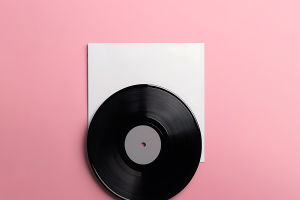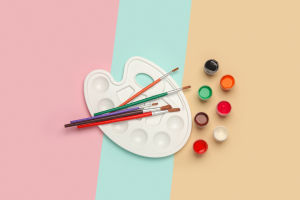Whether you're a beginner or an experienced artist, learning the right colored pencil techniques can elevate your art to the next level.
These methods help you create vibrant, intricate pieces, all while having fun in the process.
From layering to burnishing, and even using basic tools in unique ways, the possibilities are endless!
In this guide, we'll walk you through several colored pencil techniques that can help you improve your skills.
Getting Started: Essential Mark-Making
Mastering colored pencil mark-making is key to unlocking your artistic potential. How you use your pencil—its sharpness, the pressure applied, and the way you apply color—can completely change the outcome of your artwork.
- Sharp Points: A sharpened pencil allows you to create precise details, crisp lines, and delicate textures.
- Blunt Tips: Softer pencil tips work better for shading large areas or for soft gradients.
- Pressure: Light pressure gives a translucent look and layers smoothly, while firm application adds vibrancy and opacity.
Experiment with different marks, such as parallel lines, stippling, and cross-hatching, to see how they affect your artwork. Each technique allows you to add unique texture and depth.
Underpainting: A Traditional Approach
Underpainting is a classic method that adds depth and value to your colored pencil drawings. This technique begins with a single color, usually a complementary or neutral tone, and serves as the foundation for your work.
Starting with a base layer helps define light and dark areas early, saving you time on revisions. Not only does underpainting help structure the composition, but it also gives the final piece a richer, more complex feel. The underlying tones subtly show through the top layers, adding realism.
Layering Colored Pencils
Layering is one of the most rewarding techniques in colored pencil art. It's like stacking colors on top of each other to create a vibrant, textured effect. With each layer, the artwork becomes more refined and detailed.
Here are some quick tips for effective layering:
- Start Light: Begin with a soft hand, building the colors gradually.
- Build Layers: Add more layers over time to deepen the color and create complexity.
- Experiment with Pressure: Varying the pressure on your pencil can change the effect, from smooth blends to textured marks.
By layering colors, you can achieve a beautiful, seamless gradient that brings your artwork to life.
Adding Texture: Indenting and Scratching
Want to add extra texture to your drawings? Indenting and scratching are two excellent techniques for achieving intricate details like fur, leaves, or textures on objects.
- Indenting: This involves using a tool, like a stylus or the back of a pen, to create subtle indentations on the paper. This technique is great for fine details such as veins in leaves or whiskers on animals.
- Scratching: Using a sharp tool, like a craft blade, to gently scrape away colored pencil layers creates delicate effects, perfect for details like fur or grass.
Both techniques can be used sparingly to add realism and dimension to your artwork, so be gentle and practice before perfecting them.
Burnishing: Achieving a Glossy Finish
Burnishing is the process of blending layers of colored pencil to create a smooth, polished finish. This is especially effective when trying to capture the shine and smoothness of objects like glass or fruit.
To burnish, use a colorless blender pencil or a light-colored pencil to gently smooth over the colors, layering until the desired effect is achieved. This technique can bring an incredible amount of realism to your drawings.
Blending with Tools
Blending is essential for creating smooth transitions between colors. To get flawless blends, blending tools such as stumps, tortillons, or even cotton swabs are helpful.
Blending Stumps and Tortillons: These are tools made of tightly rolled paper that help soften the pencil strokes and merge colors seamlessly. They're perfect for creating smooth shading transitions without harsh lines.
Cotton Swabs: For a softer blending effect, cotton swabs can be used to gently smudge and merge colors.
Each tool has its benefits, so experiment to see which gives you the best results.
Using Powdered Pigment for a Painterly Effect
An unexpected but fun technique is using colored pencil shavings. When grated into a fine powder, the shavings can be applied with a cotton swab or sponge to create soft, atmospheric effects.
This technique can help you build backgrounds or create beautiful textures, adding depth and dimension to your art. It's an easy way to infuse your drawings with a painterly quality that stands out.
Erasing for Artistic Effects
You might think of erasers only for fixing mistakes, but they can also be powerful tools for artistic effects. There are various types of erasers, each offering unique effects:
- Kneaded Erasers: These gentle erasers can lift pigment lightly, creating soft highlights or subtle transitions.
- Vinyl Erasers: These erasers work well for creating sharp lines and removing larger areas of color.
For precision, an eraser guard can help erase tiny details without smudging nearby colors.
Finishing Touches
Once you've applied all your techniques, step back and evaluate your drawing. Does it need more contrast? Perhaps an edge needs sharpening, or a shadow could be deepened. Take the time to refine your artwork with these final touches.
By using these colored pencil techniques, your artwork will not only improve but become much more detailed, realistic, and eye-catching.
Literally Everything I Know About Colored Pencils!
Video by Scott Christian Sava


